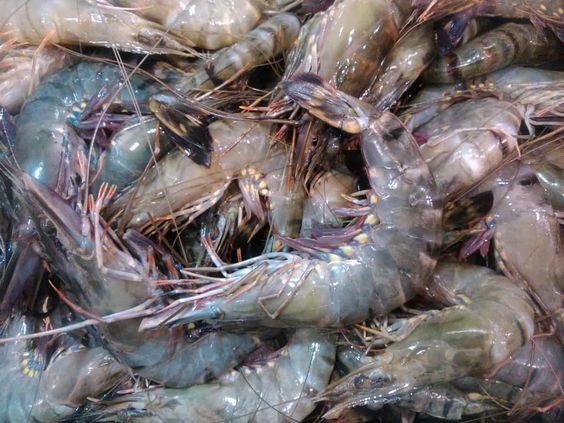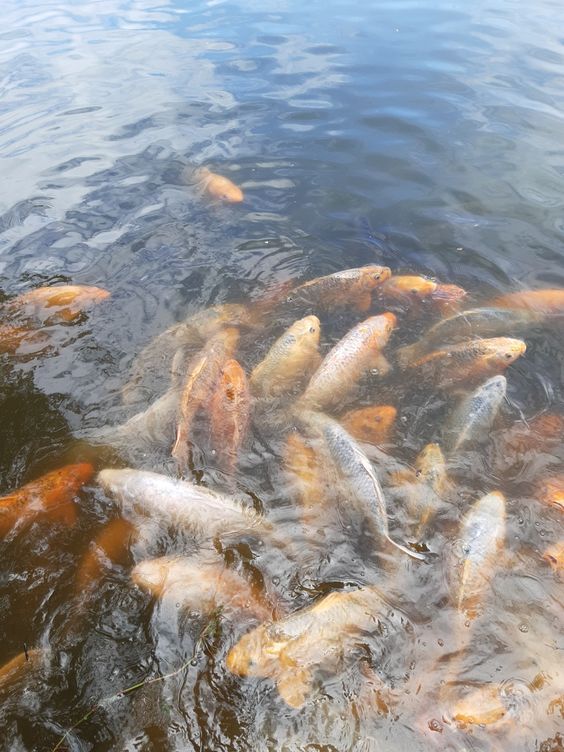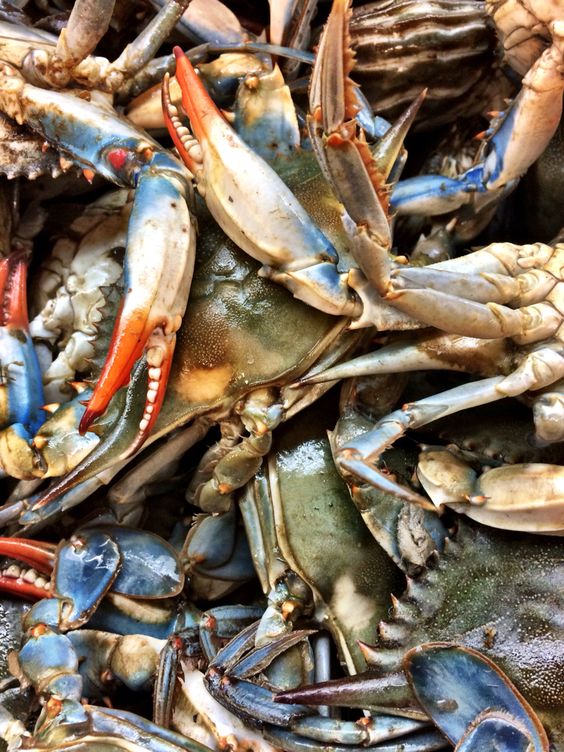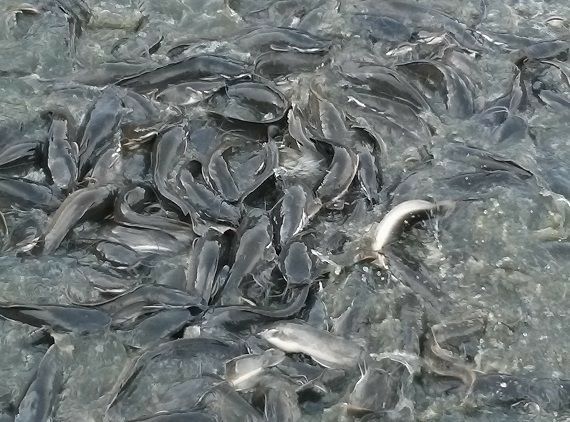Jumbo Pond Shrimp: A Comprehensive Guide
Jumbo Pond Shrimp,The world of aquaculture offers a diverse selection of aquatic species for consumption and ornamental purposes. Among these, jumbo pond shrimp, also known as giant freshwater prawns , have earned a reputation for their impressive size, delicious flavor, and potential for profitable farming. This comprehensive guide delves into the fascinating world of jumbo pond shrimp, exploring their biology, benefits, farming practices, and exciting culinary applications.
Contents
- 1 Jumbo Pond Shrimp
- 2 Life Cycle
- 3 Benefits of Jumbo Pond Shrimp
- 4 Objectives of Jumbo Pond Shrimp Farming
- 5 Ideas and Suggestions for Jumbo Pond Shrimp Farming
- 6 Advantages of Jumbo Pond Shrimp Farming
- 7 Considerations for Jumbo Pond Shrimp Farming
- 8 Hatchery Operations for Jumbo Pond Shrimp
- 9 Pond Management for Jumbo Pond Shrimp Farming
Jumbo Pond Shrimp
Jumbo pond shrimp belong to the palaemonid family, inhabiting freshwater environments like rivers, streams, and estuaries across the tropical and subtropical regions of the Indo-Pacific. These giants of the freshwater prawn world can reach a staggering length of 30 centimeters and boast a robust body with a firm, muscular tail. Their distinctive features include long antennae, powerful claws, and a smooth carapace that varies in color from greenish-brown to gray.
Life Cycle
The life cycle of jumbo pond shrimp is fascinating and requires specific conditions for successful reproduction. Here’s a breakdown of the key stages:
- Larval Stage: Females release fertilized eggs into the water, which hatch into planktonic larvae that drift with the currents. These tiny larvae feed on microscopic organisms and undergo several molting stages during this vulnerable period.
- Post-Larval Stage: As the larvae mature, they settle onto the bottom of freshwater bodies and transform into post-larvae. This stage marks a shift towards a benthic lifestyle, where they scavenge for food on the substrate.
- Juvenile and Adult Stages: Juveniles resemble miniature adults and continue to grow through molting. Once reaching sexual maturity, typically within 12-18 months, they can begin reproducing, perpetuating the cycle.
Benefits of Jumbo Pond Shrimp
Jumbo pond shrimp offer a multitude of benefits for both consumers and aquaculture farmers. Here’s a closer look at the advantages they present:
- Nutritional Powerhouse: Jumbo pond shrimp are an excellent source of lean protein, low in fat and calories. They are also rich in essential vitamins and minerals, including Vitamin B12, selenium, zinc, and iron, contributing to a healthy diet.
- Flavorful Delicacy: The flesh of jumbo pond shrimp is prized for its sweet, succulent taste and firm texture, making them a versatile ingredient in various culinary applications. From grilled and roasted dishes to flavorful curries and pastas, their versatility caters to diverse palates.
- Sustainable Aquaculture: Compared to their ocean-dwelling counterparts, jumbo pond shrimp farming offers a more sustainable option. Freshwater aquaculture systems can be designed to minimize environmental impact while maximizing production.
- Economic Opportunity: The global demand for jumbo pond shrimp creates significant economic opportunities. Farmers can generate income through local and international markets, contributing to rural development and job creation.
Objectives of Jumbo Pond Shrimp Farming
The primary objective of jumbo pond shrimp farming is to cultivate these crustaceans in a controlled environment for commercial purposes. Here’s a breakdown of the key goals:
- Maximize Production: Farming practices aim to create optimal conditions for growth and reproduction, ensuring a high yield of healthy, marketable jumbo pond shrimp.
- Maintain Water Quality: Water quality is paramount for shrimp health. Maintaining optimal temperature, oxygen levels, and salinity are essential for successful farming.
- Disease Prevention: Implementing biosecurity measures and preventive healthcare practices helps minimize the risk of disease outbreaks that can devastate shrimp populations.
- Sustainable Practices: Modern jumbo pond shrimp farming strives to minimize environmental impact through responsible water management, waste reduction strategies, and the use of sustainable feed sources.
Ideas and Suggestions for Jumbo Pond Shrimp Farming
For aspiring or existing jumbo pond shrimp farmers, here are some valuable ideas and suggestions to consider:
- Selecting the Right System: Several pond or tank-based systems can be used for jumbo pond shrimp farming. Researching and selecting the system that aligns with your resources, space availability, and production goals is crucial.
- Water Management: Invest in a reliable water quality monitoring system and implement strategies to maintain optimal temperature, oxygen levels, and salinity for the shrimp’s specific needs.
- Feed Selection: High-quality, balanced feed formulations specifically designed for jumbo pond shrimp are essential for proper growth and development. Consider consulting with a nutritionist to determine the most suitable feed for your operation.
- Biosecurity: Develop and adhere to strict biosecurity protocols to prevent the introduction and spread of diseases. This may include quarantine procedures, disinfection protocols, and proper handling practices.
- Record Keeping: Maintaining detailed records of production data, water quality parameters, feed usage, and any health issues is crucial for monitoring progress, identifying potential problems, and optimizing farming practices.
Advantages of Jumbo Pond Shrimp Farming
Compared to other aquaculture options, jumbo pond shrimp farming offers Several advantages make shrimp farming an attractive option for aquaculture entrepreneurs:
- High Market Demand: Jumbo pond shrimp are a popular seafood choice globally, consistently fetching premium prices due to their superior size and flavor. This translates to potentially high profitability for farmers who can meet market demands.
- Relatively Fast Growth: Compared to other aquaculture species, jumbo pond shrimp exhibit a relatively fast growth cycle, reaching marketable size within 12-18 months. This allows for quicker returns on investment and more production cycles per year.
- Adaptability to Farming Systems: Jumbo pond shrimp can be successfully farmed in various systems, including ponds, tanks, and raceways. This flexibility allows farmers to adapt their operations based on available resources and space constraints.
- Efficient Feed Conversion: Jumbo pond shrimp demonstrate a good feed conversion ratio, meaning they efficiently convert feed into biomass. This translates to lower feed costs per unit of shrimp produced, improving farm profitability.
- Potential for Integration with Other Aquaculture: Jumbo pond shrimp farming can be integrated with other aquaculture practices, such as fish farming. This can create a more efficient system by utilizing waste products from one species as nutrients for another.
Considerations for Jumbo Pond Shrimp Farming
While shrimp farming offers numerous advantages, there are also important considerations to keep in mind before embarking on this venture:
- Startup Costs: Establishing a jumbo pond shrimp farm requires an initial investment for infrastructure, equipment, water management systems, and quality feed. Careful planning and financial resources are crucial.
- Technical Expertise: Successful jumbo pond shrimp farming necessitates a good understanding of shrimp biology, water quality management, disease prevention, and proper feeding practices. Acquiring the necessary knowledge or hiring experienced personnel is essential.
- Market Access: Building strong relationships with seafood buyers and distributors is crucial for selling your harvest. Researching local and international market opportunities is vital before starting a farm.
- Environmental Impact: While generally considered more sustainable than some forms of capture fisheries, responsible management practices are essential to minimize the environmental impact of jumbo pond shrimp farming. This includes proper waste management and water treatment procedures.
- Potential for Disease Outbreaks: Like any form of animal husbandry, jumbo pond shrimp farming carries the risk of disease outbreaks. Implementing biosecurity measures and having a disease prevention plan in place helps mitigate these risks.
Hatchery Operations for Jumbo Pond Shrimp
Jumbo pond shrimp farming typically relies on hatchery-produced juveniles for stocking ponds or tanks. Hatcheries play a critical role in the success of this industry by ensuring a consistent supply of healthy, high-quality shrimp for farmers.
Here’s a breakdown of the key functions of a shrimp hatchery:
- Broodstock Management: Healthy, mature jumbo pond shrimp are selected and maintained as broodstock to produce eggs for hatchery production. Proper nutrition, water quality, and breeding conditions are essential for successful spawning.
- Egg Collection and Hatching: Once females spawn, the fertilized eggs are carefully collected and placed in hatching tanks with optimal water conditions to ensure high hatching rates.
- Larval Rearing: The delicate larval stage requires meticulous care. Hatchery staff provide specialized feed, maintain strict water quality parameters, and monitor larval development closely.
- Post-Larval Rearing: As the larvae mature into post-larvae, they require a shift in diet and rearing environment. Hatcheries ensure proper nutrition and growth before selling these juveniles to farmers for stocking their ponds.
Pond Management for Jumbo Pond Shrimp Farming
Ponds are the most common environment for raising shrimp. Effective pond management practices are crucial for optimal growth and survival rates. Here are some key aspects to consider:
- Pond Preparation: Before stocking shrimp, ponds require thorough cleaning and preparation. This may involve removing unwanted organisms, applying lime to adjust pH levels, and fertilizing the pond to stimulate the growth of natural food sources for the shrimp.
- Stocking Density: Maintaining the appropriate stocking density in a pond is essential. Overcrowding can lead to stress, competition for food and oxygen, and increased disease susceptibility.
- Water Quality Management: Regular monitoring and adjustments of water quality parameters, such as temperature, dissolved oxygen, pH, and ammonia levels, are crucial for maintaining a healthy environment for the shrimp.
- Aeration: Providing adequate aeration in ponds helps maintain dissolved oxygen levels at optimal ranges, particularly during periods of high biological activity.
- Feed Management: Supplementation with high-quality, balanced feed ensures the shrimp receive the necessary nutrients for proper growth and development. Feeding regimes should be adjusted based on the shrimp’s life stage and water temperature.
- Health Monitoring: Regular monitoring of shrimp health is essential for early detection of any disease outbreaks. Implementing biosecurity measures helps prevent the introduction of pathogens.






